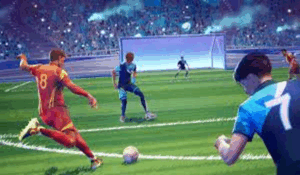Popular Now
Ready for a thrilling comeback? This rematch guide dives into howto master a second showdown and claim victory. Whether in sports, debates, gaming, or personal goals, the art of the rematch requires strategy, preparation, and mental resilience. Let’s explore step by step how to turn past setbacks into triumphant rematches.
1. Understanding the Rematch: What It Means and Why It Matters
A rematch isn’t just another bout—it’s the chance to rewrite history. A second encounter offers the opportunity to learn from past mistakes and apply new strategies.
In a rematch, example, you get to analyze what went wrong and build a stronger blueprint for success. It’s as much psychological as it is tactical.
The Psychology Behind a Rematch
The mental edge in a rematch is powerful. Knowing the fight’s rhythm, the dialogue’s pattern, or the opponent’s tactics gives you an innate advantage.
However, beware of the example trap: overconfidence. Awareness and humility are key.
Different Types of Rematches
Rematches appear in varied arenas: sports, politics, work, creative pursuits. Each requires a tailored howto approach.
Knowing your battlefield—whether ring, pitch, boardroom, or stage—helps you develop a focused rematch plan.

2. Reflecting on the First Encounter – A Critical Analysis
Before planning your strategy, reflect deeply on the initial match. Identify patterns and pinpoint vulnerabilities.
Using structured reflection, you can turn lost experiences into meaningful lessons.
Reviewing Performance Metrics
Collect data: scores, timings, feedback. Spot trends in stamina, errors, or missed chances. For instance, in chess, examine each blunder move.
Feedback Collection
Talk to coaches, friends, or peers. Gather diverse perspectives. Ask questions like “what did you notice?” and “where did I slip?”
3. Setting Clear Objectives for Your Rematch
Without goals, your rematch preparation lacks direction. Clear objectives guide training and set expectations.
Tailor your objectives both broadly and specifically.
SMART Goals
-
Specific: E.g. “Reduce goals conceded by 50%.”
-
Measurable: Track key metrics like points, errors.
-
Achievable: Stretch your limits realistically.
-
Relevant: Aligned with long-term goals.
-
Time-bound: Set deadlines for progress.
Breaking Down Major Targets
Deconstruct larger aims into weekly or daily milestones. This boosts motivation and clarifies strategy to howto tackle distinct challenges.

4. Designing a Customized Training Plan
Preparation equals performance. A structured plan transforms goals into action.
Your plan should map out physical, technical, and mental training components.
Physical Conditioning
Depending on the rematch type, this could mean workouts for endurance, strength, or agility. In running, add interval training. In chess, support focus with yoga.
Technical and Tactical Practice
Recreate rematch scenarios. In gaming, simulate maps and plays. For debate, rehearse arguments and counterpoints.
Mental Conditioning
Include meditation, visualization, and stress drills. Mentally rehearse ideal and adverse situations.
5. Developing Mindset and Mental Resilience
A rematch often hinges on mental toughness and confidence.
This section focuses on howto cultivate the mental grit you need.
Embracing a Growth Mindset
From setbacks grow strengths. Reinforce that failure reveals opportunities for growth.
Visualization Techniques
Visualize outperforming the opponent, avoiding past errors, and staying calm under pressure.
Coping with Pressure
Practice breathing techniques, develop routines, and build mental rehearsal of high-pressure scenarios.
6. Studying Your Opponent or Situation
Knowing your opponent is critical to winning the rematch.
Use reconnaissance to inform your howto adapt strategy.
Reviewing Past Performance
Watch footage, transcripts, or logs. Spot opponent weaknesses and predictable behaviors.
Predicting Adjustments
Anticipate how your opponent will adapt. Create contingency plans to neutralize these countermeasures.
7. Simulating Rematch Conditions
The best training mirrors real competition. Practice under similar physical, emotional, and environmental conditions.
This immersive simulation helps reduce chaotic example effects on match day.
Mock Matches
Replicate format, time limits, scoring. Invite observers to recreate match intensity and audience presence.
Time and Environment Replication
Match the day length, time zones, and even noise level to build psychological familiarity.
8. Nutrition, Rest, and Recovery Strategy
Physical readiness isn’t just training—it’s recovery and nutrition too.
A holistic approach ensures peak performance when it counts.
Nutrition Plan
Fuel your body with the right mix of carbs, proteins, fats, vitamins, and hydration. Timing nutrition is key for optimal performance.
Rest and Sleep
Schedule rest days and maintain sleep hygiene. Muscle repair and mental recovery happen off the field.
Injury Prevention and Therapy
Incorporate stretching, physiotherapy, massage, and ice baths. Preventing minor issues safeguards peak condition.
9. Final Preparations: Game Week Strategy
The week before sets the tone for match day. Adjust training to avoid fatigue, while keeping momentum.
Tapering Training Load
Reduce volume but keep intensity. This ensures freshness without losing readiness.
Mental Priming
Maintain visualization routines. Avoid distractions and reaffirm confidence daily.
Logistics Check
Confirm location, timing, gear, nutrition, travel. Avoid last-minute surprises.
10. Match Day Execution and Post-Rematch Analysis
With plates set and mindset primed, it’s showtime.
Afterwards, conducting a final analysis ensures continual improvement.
Match Day Routines
Warm-up routines, pre-match rituals, and mental cueing set the tone for a strong start.
In-Match Adaptation
Execute with flexibility. If your plan falters, pivot calmly based on practiced contingency strategies.
Post-Match Review
Analyze immediate reactions. Review performance via notes, footage, and feedback. Celebrate what worked; learn from what didn’t.

Conclusion
The road to a victorious rematch is paved with reflection, strategy, preparation, and resilience. By following this structured howto guide—from analyzing past mistakes to executing under pressure—you increase your chances of claiming a sweeter, earned victory. And even if outcomes don’t fully align, you’ll know you left nothing on the table.
Now, gear up, trust your preparation, and embrace the rematch. Your opportunity to rewrite the story is here—grab it.















